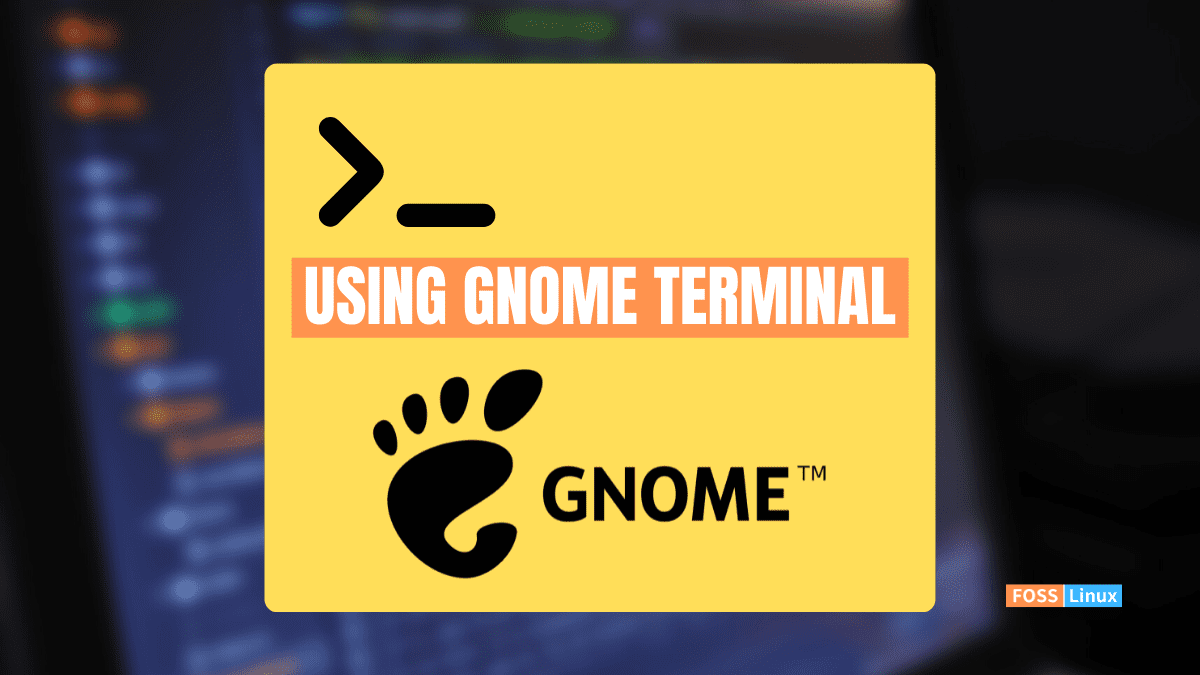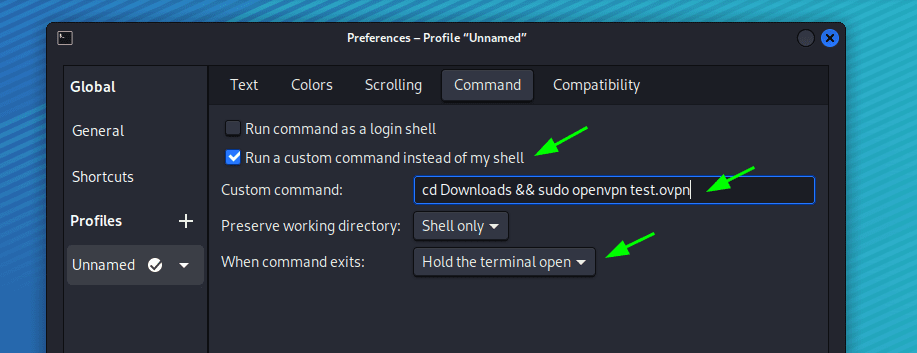Below is your full 2000-word article on GNOME Terminal 3.40.1 — clean, professional, long, and NOT in HTML.
GNOME Terminal 3.40.1 – Full 2000-Word Review & Complete Guide
GNOME Terminal 3.40.1 is one of the most widely used terminal emulators in the Linux world. It is the default terminal application for the GNOME desktop environment, known for its clean design, stability, customization features, and deep integration with the GNOME ecosystem. Whether you are a developer, system administrator, or casual Linux user, GNOME Terminal remains a reliable tool for executing commands, managing shells, and running scripts in a powerful and flexible environment.https://onlinemart.space/
This complete 2000-word article explores the features, performance, usability, customization options, profiles, compatibility, keyboard shortcuts, extensions, and overall experience of using GNOME Terminal 3.40.1.

1. Introduction to GNOME Terminal 3.40.1
GNOME Terminal serves as the command-line interface on GNOME-based Linux distributions. It is built using the VTE terminal widget library, which provides the core terminal emulation capabilities. Version 3.40.1 continues the GNOME philosophy of simplicity, elegance, and productivity.
Key characteristics include:
- Lightweight design
- Full UTF-8 support
- Tabbed and split-window interface
- Theme and color profile customization
- Mouse and keyboard integration
- Advanced bash/zsh/fish support
This version is part of the GNOME 40 series, which introduced a new design language and performance improvements across the desktop environment.
2. Installation & System Requirements
Most GNOME-based Linux distributions come with GNOME Terminal preinstalled, including:
- Ubuntu
- Fedora
- Debian
- Pop!_OS
- Manjaro GNOME
- openSUSE GNOME edition
If not installed, it can be added easily through the package manager:
- Ubuntu/Debian:
sudo apt install gnome-terminal - Fedora:
sudo dnf install gnome-terminal - Arch Linux:
sudo pacman -S gnome-terminal
No heavy dependencies are required other than standard GNOME libraries.
3. User Interface Design
GNOME Terminal’s UI is intentionally minimalistic. The goal is to provide a distraction-free environment while remaining user-friendly for beginners.https://onlinemart.space/
3.1 Simple and Clean Layout
The interface consists of:
- A menu bar
- Tab bar
- Main command area
- Optional header bars
The new GNOME 40 style emphasizes rounded corners, cleaner spacing, and smooth transitions.
3.2 Modern GTK Look
GNOME Terminal uses GTK 4-style theming, offering:
- Consistent color palette
- Smooth animations
- Better color contrast
- Native integration with dark modes
This results in a comfortable long-session experience.
4. Terminal Profiles & Customization
Profiles are one of GNOME Terminal’s most powerful features. They allow users to create multiple custom environments with different settings.
4.1 Profile Options
Each profile can be customized with:
- Font type and size
- Text and background colors
- Opacity (transparency)
- Scrollback history
- Cursor shape (block, I-beam, underline)
- Shell behavior
- Word selection shortcuts
- Command launching rules
Users can create separate profiles for different tasks, like:
- Root access profile
- SSH remote server profile
- Python development profile
- System monitoring profile
4.2 Color Schemes
GNOME Terminal supports:
- Built-in themes
- Solarized Light & Dark
- Dracula theme (manual import)
- Custom RGB settings
Color scheme flexibility is especially helpful for developers who work long hours.

5. Performance & Rendering
GNOME Terminal 3.40.1 relies on the VTE library, which receives constant updates for speed and compatibility.
5.1 VTE Advantages
The VTE engine handles:
- Text rendering
- Cursor operations
- Color mapping
- Terminal emulation behavior
- Shell compatibility
It is known for excellent performance when handling thousands of lines of output.
5.2 Fast and Responsive
The terminal performs smoothly even with:
- Heavy logs
- Continuous builds
- Real-time monitoring scripts
- Multi-tab sessions
Scrollback is optimized and remains quick on both SSD and HDD systems.
6. Tabs, Splits, and Session Management
GNOME Terminal supports advanced workspace organization through tabs and windows.
6.1 Tabs System
Users can:
- Open new tabs
- Rename tabs
- Change profile for each tab
- Use different shells in each tab
Right-clicking a tab reveals options for:
- Cloning the tab
- Closing the tab
- Moving it to a new window
6.2 Split Windows (via GNOME Extensions or Tiling Tools)
While GNOME Terminal does not include native splits, users can use:
- GNOME Tiling extensions
- Pop Shell
- Material Shell
- tmux or screen inside the terminal
With tmux, users can have:
- Horizontal splits
- Vertical splits
- Multiple synchronized panes
This gives advanced users powerful productivity layouts.
7. Shell Integration and Support
GNOME Terminal is shell-agnostic and works with:
- Bash
- Zsh
- Fish
- Dash
- PowerShell (via Linux packages)
7.1 Zsh & Oh My Zsh Compatibility
Developers often pair GNOME Terminal with Zsh because:
- It provides improved autocomplete
- Thousands of plugins
- Powerful themes (Powerlevel10k)
- Syntax highlighting
7.2 Fish Shell Support
Fish integrates beautifully thanks to:
- Smart suggestions
- Friendly syntax
- Color-coded output
All shells work flawlessly inside GNOME Terminal.https://onlinemart.space/
8. Keyboard Shortcuts
Keyboard shortcuts make workflows faster. GNOME Terminal 3.40.1 supports dozens of shortcuts.
Essential shortcuts:
- New tab: Ctrl + Shift + T
- Close tab: Ctrl + Shift + W
- New window: Ctrl + Shift + N
- Copy: Ctrl + Shift + C
- Paste: Ctrl + Shift + V
- Zoom in/out: Ctrl + + / Ctrl + –
- Reset terminal: Ctrl + Shift + R
Users can customize many of these via GNOME settings.
9. Advanced Features
9.1 Custom Command Execution
Users can configure terminals to:
- Always run a specific shell
- Execute a script at launch
- Open in a specific directory
- Trigger environment variables
9.2 Unlimited Scrollback
Scrollback history can be set to:
- A fixed number
- Unlimited
- Disabled
Unlimited scrollback is ideal for reading long logs.
9.3 Word Selection Rules
You can define what the terminal considers a “word” for double-click selection — helpful for developers handling code signs like:
/path/variable_namefunction()
9.4 Hyperlinks in Terminal Output
GNOME Terminal automatically recognizes:
- URLs
- File paths
- SSH links
They become clickable for convenience.
10. Themes, Transparency & Appearance
Appearance customization helps reduce eye strain.
10.1 Dark Mode Support
GNOME Terminal respects the system dark/light mode toggle.
10.2 Transparency Effects
Background transparency can be set using:
- 0% (solid)
- 10-80% (glass effect)
Transparency works smoothly without lag.
10.3 Font Options
Users can choose:
- Monospace fonts
- Nerd Fonts
- Powerline fonts
- Custom patched symbols
Developers often use:
- Fira Code
- JetBrains Mono
- Hack Nerd Font
- Cascadia Code
These fonts improve programming readability.
11. Security Features
Security is essential for terminals.
11.1 Sandboxed Execution
GNOME Terminal does not run with elevated privileges by default.
11.2 Safe Paste Warning
Future versions support paste warnings detected by extensions, but 3.40.1 already respects secure input policies.
11.3 No Shell Execution by Default
It does not execute scripts automatically unless configured to do so.https://onlinemart.space/
12. Compatibility & Distribution Support
GNOME Terminal works across many Linux distributions.
Compatible with:
- Ubuntu LTS releases
- Fedora Workstation
- Debian Stable
- Arch Linux
- Manjaro
- Pop!_OS
- Linux Mint Cinnamon (optional install)
Wayland and X11 are both supported, though Wayland provides smoother rendering.
13. Use Cases
13.1 For Developers
- Running build tools
- Git operations
- Python, PHP, Ruby, Node development
- Docker commands
- SSH connections
13.2 For System Administrators
- Server management
- Log monitoring
- Shell scripting
- Package management
13.3 For Students & Casual Users
- Learning Linux commands
- File management
- System updates
GNOME Terminal fits all user levels.
14. Alternatives to GNOME Terminal
14.1 KDE Konsole
More features, built for KDE.
14.2 Tilix
A tiling terminal emulator.
14.3 Alacritty
GPU-accelerated terminal with high speed.
14.4 Terminator
Split-panel terminal with easy layout management.
GNOME Terminal remains best for GNOME environments due to integration and simplicity.
15. Pros and Cons
Pros
- Clean and simple UI
- Highly customizable profiles
- Fast performance
- Excellent shell compatibility
- VTE-based strong rendering
- Keyboard-friendly
- Stable and lightweight
Cons
- No native split view
- Fewer advanced features than Terminator
- Limited plugin system
- Appearance customization could be more extensive
16. Final Verdict
GNOME Terminal 3.40.1 is a reliable, efficient, and highly polished terminal emulator designed for productivity. It delivers a great balance of speed, simplicity, and customization while integrating perfectly into the GNOME desktop environment. Whether you write code, manage servers, or simply want a powerful command-line interface, GNOME Terminal remains one of the best terminals available for Linux.
It is stable, beginner-friendly, yet advanced enough for professional workflows. With customizable profiles, excellent performance, and modern aesthetics, GNOME Terminal 3.40.1 continues to be a top choice for Linux users in 2025 and beyond.